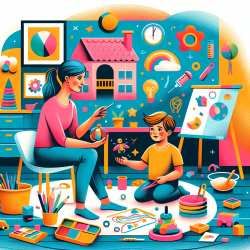As practitioners in the field of speech-language pathology, we are constantly seeking methods to enhance our therapeutic approaches and outcomes for children. A recent case report titled Child's Play: Therapist's Narrative published in the Indian Journal of Psychological Medicine provides invaluable insights into the effectiveness of Child-Centered Play Therapy (CCPT) for children with emotional disorders. This blog post will explore key findings from the study and suggest ways to integrate these insights into your practice to create better outcomes for children.
Understanding Child-Centered Play Therapy
Child-Centered Play Therapy (CCPT) is rooted in the work of Virginia Axline, who demonstrated its efficacy in treating various mental health and behavioral problems in children. The core principle of CCPT is to create a safe and nurturing environment where children can lead the play with minimal limits, allowing them to express their feelings, needs, and conflicts.
Case Report Highlights
The case report focused on a 6-year-old girl with emotional and behavioral difficulties, including dullness, slowness, and decreased interaction. The child-centered play therapy sessions, conducted over ten sessions followed by parental psychoeducation, revealed significant improvements in the child's communication, activities, and emotional well-being.
Initial Phase (1-3 Sessions)
- Developed rapport with the child.
- Allowed the child to explore play materials freely.
- Identified the child's dependence on the therapist and feelings of deprivation.
Middle Phase (4-8 Sessions)
- Child expressed more meaningful themes and coped with fears.
- Displayed aggression toward boy figures, indicative of underlying anxieties.
- Exhibited age-appropriate play and improved interaction.
Termination Phase (9-10 Sessions)
- Child explored all objects and expressed enjoyment of the play therapy.
- Parents were encouraged to continue play interactions at home.
- Provided feedback to parents and teachers to support the child's ongoing development.
Implementing Research Outcomes in Practice
Based on the findings from this case report, practitioners can enhance their therapeutic approach by:
- Creating a safe and nurturing play environment with a variety of toys and materials.
- Allowing children to lead the play sessions, facilitating their expression of feelings and conflicts.
- Engaging parents in the therapeutic process through psychoeducation and home-based play interventions.
- Providing consistent follow-up sessions to monitor progress and make necessary adjustments.
Encouraging Further Research
While the case report provides compelling evidence of the benefits of CCPT, it also highlights the need for objective pre- and post-evaluation of the child's functioning. Practitioners are encouraged to engage in further research to validate and expand upon these findings. Implementing evidence-based practices ensures that we continue to provide the highest quality of care for our young clients.
To read the original research paper, please follow this link: Child's Play: Therapist's Narrative










